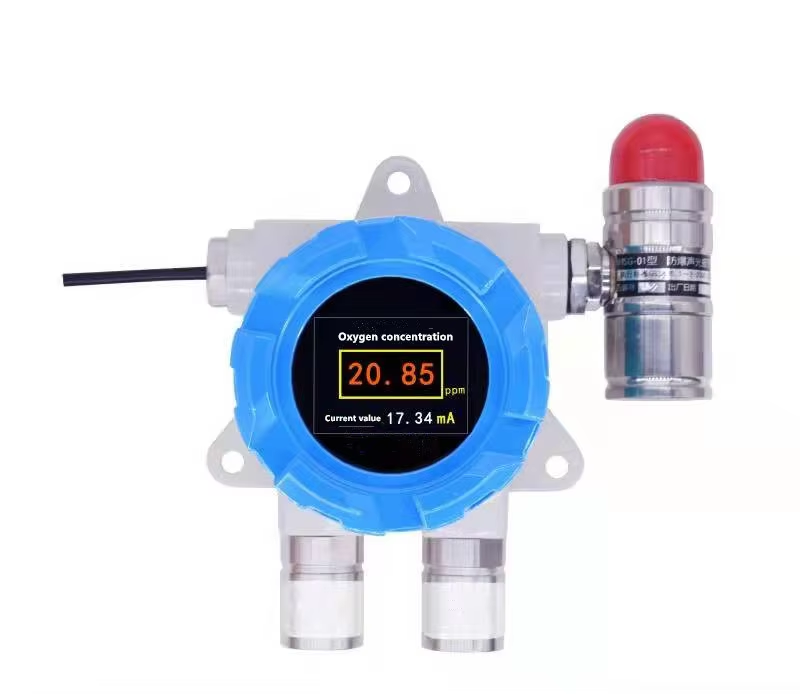Europe is a global leader in environmental protection, industrial safety, and personal health. Gas sensors, as critical technology for monitoring air quality and detecting hazardous leaks, are deeply integrated into multiple layers of European society. From stringent industrial regulations to smart civil services, gas sensors are silently safeguarding Europe’s green transition and safety.
Below are the primary case studies and core application scenarios for gas sensors in European countries.
I. Core Application Scenarios
1. Industrial Safety and Process Control
This is the most traditional and demanding field for gas sensors. Europe’s vast chemical, pharmaceutical, oil, and gas industries require continuous monitoring of flammable and toxic gas leaks as a fundamental safety requirement.
- Case Study: Norwegian Offshore Oil & Gas Platforms
Platforms in the North Sea extensively use high-precision, explosion-proof gas detection systems from companies like Crowcon (UK) or Senseair (Denmark). These sensors continuously monitor concentrations of gases like Methane (CH₄) and Hydrogen Sulfide (H₂S). Upon detecting a leak, they immediately trigger alarms and activate ventilation or automatic shutdown systems, effectively preventing fires, explosions, and poisoning incidents, thereby protecting personnel and assets worth billions of euros. - Application Scenarios:
- Chemical Plants/Refineries: Monitoring areas around pipelines, reactors, and storage tanks for combustible gases (LEL), VOCs (Volatile Organic Compounds), and specific toxic gases (e.g., Chlorine, Ammonia).
- Underground Utility Networks: Gas utility companies (e.g., France’s Engie, Italy’s Snam) use inspection robots or fixed sensors to monitor underground gas pipelines for methane leaks, enabling predictive maintenance.
2. Ambient Air Quality Monitoring
To combat climate change and air pollution, the EU has established stringent air quality standards (e.g., the Ambient Air Quality Directive). Gas sensors are the foundation for building high-density monitoring networks.
- Case Study: Dutch National Air Quality Monitoring Network
The Netherlands utilizes a network of low-cost, miniature sensor nodes from suppliers like Senseair (Netherlands), complementing traditional monitoring stations to create a high-resolution, real-time air quality map. Citizens can use mobile apps to check the concentration of PM2.5, Nitrogen Dioxide (NO₂), and Ozone (O₃) on their street, allowing them to choose healthier routes or times for travel. - Application Scenarios:
- Urban Air Monitoring Stations: Fixed stations that precisely monitor the six standard pollutants: NO₂, O₃, SO₂, CO, and PM2.5.
- Mobile Monitoring Platforms: Sensors installed on buses or street sweepers create a “moving grid” for monitoring, filling spatial gaps between fixed stations (common in major cities like London and Berlin).
- Hotspot Monitoring: Dense deployment of sensors around schools, hospitals, and congested traffic areas to assess the impact of pollution on sensitive populations.
3. Smart Buildings and Building Automation (BMS/BAS)
Aiming to improve energy efficiency and occupant comfort, smart buildings heavily utilize gas sensors to optimize ventilation systems (HVAC) and ensure Indoor Air Quality (IAQ).
- Case Study: German “Smart Green Towers”
Modern smart office buildings in cities like Frankfurt commonly install CO₂ and VOC sensors from companies like Sensirion (Switzerland) or Bosch (Germany). By monitoring occupancy levels in meeting rooms and open-plan offices (inferred from CO₂ concentration) and harmful gases released from furnishings, the Building Management System (BMS) automatically adjusts fresh air intake. This ensures employee health and cognitive performance while avoiding the energy waste of over-ventilation, achieving a perfect balance between energy savings and well-being. - Application Scenarios:
- Offices/Meeting Rooms: CO₂ sensors control Demand-Controlled Ventilation (DCV).
- Schools/Gyms: Ensuring sufficient oxygen supply in densely occupied spaces.
- Underground Parking Garages: Monitoring CO and NO₂ levels to automatically activate exhaust systems and prevent fume buildup.
4. Consumer Electronics and Smart Homes
Gas sensors are becoming increasingly miniaturized and low-cost, entering everyday households.
- Case Study: Smart ACs and Air Purifiers in Finnish & Swedish Homes
Many air purifiers in Nordic homes have built-in PM2.5 and VOC sensors. They automatically detect pollution from cooking, renovations, or outdoor smog and adjust their operation settings accordingly. Furthermore, carbon monoxide (CO) alarms are legally mandatory in European homes, effectively preventing fatal poisoning caused by faulty gas boilers or heaters. - Application Scenarios:
- Smart Air Purifiers: Automatically monitor and purify indoor air.
- Kitchen Gas Safety: Methane sensors embedded under gas hobs can automatically shut off the gas valve in case of a leak.
- CO Alarms: Mandatory safety devices in bedrooms and living areas.
5. Agriculture and Food Industry
Gas sensors play a unique role in precision agriculture and food safety.
- Case Study: Italian Perishable Food Cold Chain Logistics
Cold storage trucks transporting high-value produce (e.g., strawberries, spinach) are equipped with Ethylene (C₂H₄) sensors. Ethylene is a ripening hormone released by the fruit itself. Monitoring and controlling its concentration can effectively delay ripening and spoilage, significantly extending shelf life and reducing food waste. - Application Scenarios:
- Precision Livestock Farming: Monitoring Ammonia (NH₃) and Hydrogen Sulfide (H₂S) concentrations in barns to improve animal welfare and increase yield.
- Food Packaging: Smart packaging labels under development incorporate sensors that can indicate freshness by detecting specific gases produced by food spoilage.
II. Summary and Trends
The application of gas sensors in Europe is characterized by the following:
- Regulation-Driven: Stringent legal frameworks (safety, environmental, energy efficiency) are the primary force behind their widespread adoption.
- Technology Integration: Sensors are deeply integrated with the Internet of Things (IoT), big data, and Artificial Intelligence (AI), evolving from simple data points into the nerve endings of smart decision-making networks.
- Diversification and Miniaturization: Application scenarios are constantly细分 (segmenting), driving diverse products for different needs and price points, with sizes becoming increasingly smaller.
- Data Transparency: Much environmental monitoring data is made public, enhancing citizen engagement in environmental issues and trust.
Looking ahead, with the advancement of the European Green Deal and carbon neutrality goals, the application of gas sensors in emerging fields like renewable energy (e.g., Hydrogen (H₂) leak detection) and Carbon Capture and Storage (CCS) will undoubtedly expand, continuing to play an indispensable role on Europe’s path to sustainable development.
For more gas sensor information,
please contact Honde Technology Co., LTD.
Email: info@hondetech.com
Company website: www.hondetechco.com
Tel: +86-15210548582
Post time: Sep-19-2025


